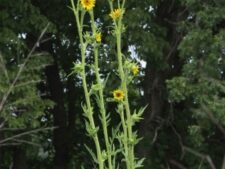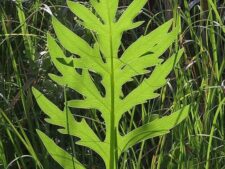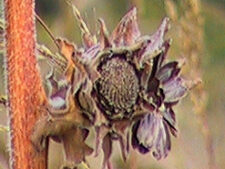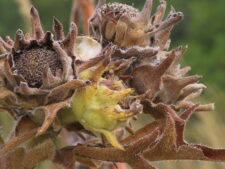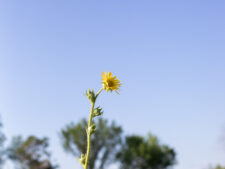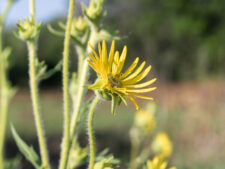
This native perennial sunflower has stout stems from 3-9 feet tall and a large taproot up to 10 feet deep. The distinctive, deeply segmented alternate leaves are largest at the base (up to 16 inches) becoming progressively smaller above (B,C). Several alternate flower heads 3-4 inches in diameter arise from the upper third of the stem, each with 15-24 petal-like ray florets surrounding a flat central disk holding numerous inconspicuous yellow disk florets (A,B). At the base of the flower are hairy, lance-shaped green bracts, which turn brown as the plant matures (A,E). Only the showy ray florets are fertile producing very flat, horizontally oriented seeds arranged around the edge of the disk (D).
Prefers moister sites in native prairies. Uncommon in some (not all) of the restored prairies at Neale Woods. Flowering occurs in July and August.
The tendency to orient its leaves facing east or west is responsible for the common names Compass Plant and Polar Plant. Other common names like Gumweed and Rosinweed were prompted by the resinous sap exuded when the upper stem is broken.
Native Americans and pioneer children used the dried sap for chewing gum.
Unlike most of our showy yellow sunflowers which have fertile, seed producing central disk florets, members of the Silphium genus which includes compass plant are different. Here, only the showy ray florets are fertile, producing very flat horizontally oriented seeds placed around the edge of the disk (D).
The content of NatureSearch is provided by dedicated volunteer Naturalists of Fontenelle Forest who strive to provide the most accurate information available. Contributors of the images retain their copyrights. The point of contact for this page is: Neal Ratzlaff.

 Identification
Identification